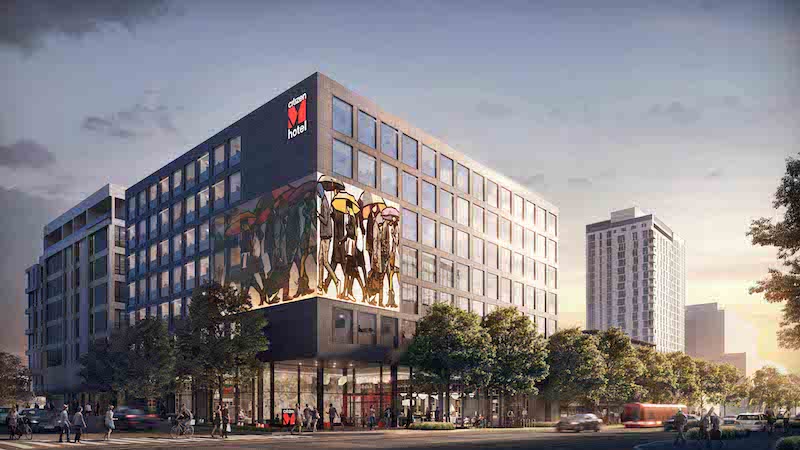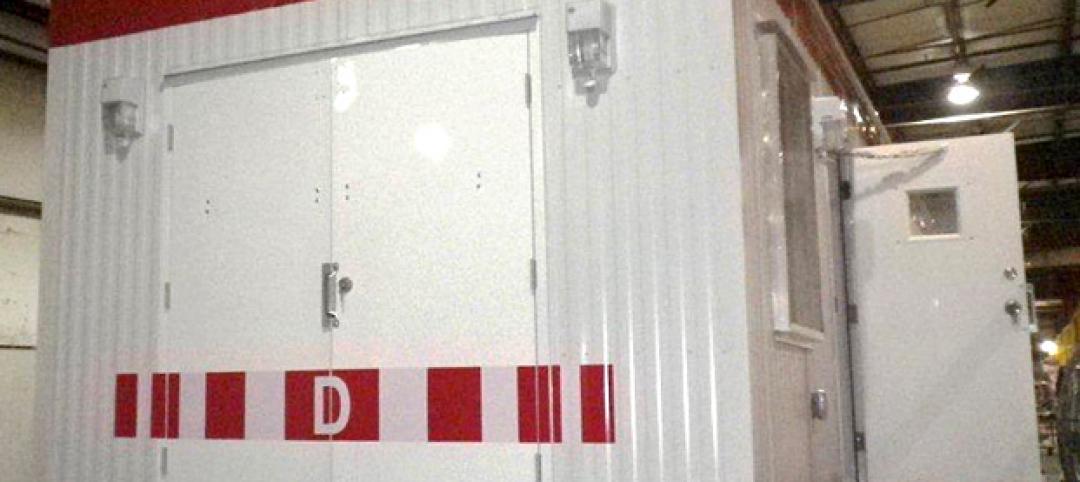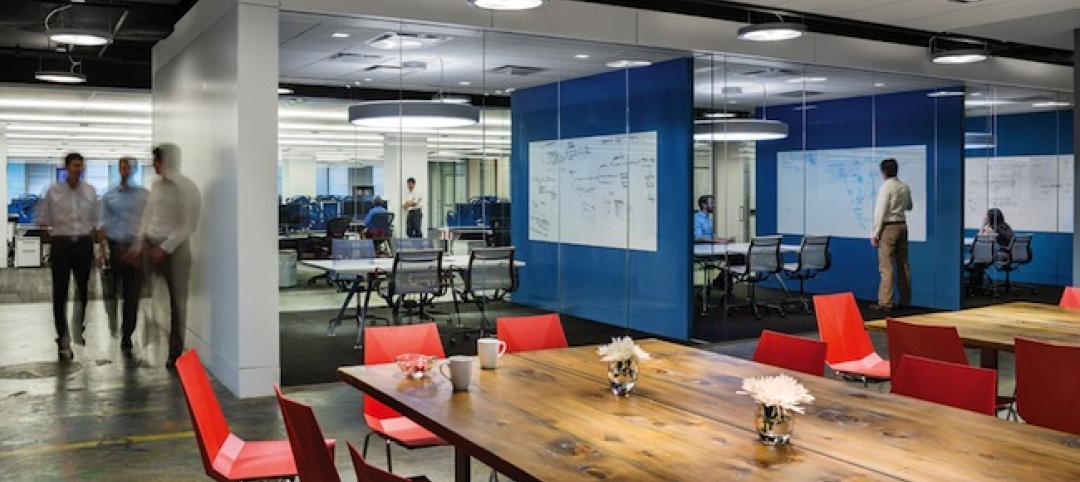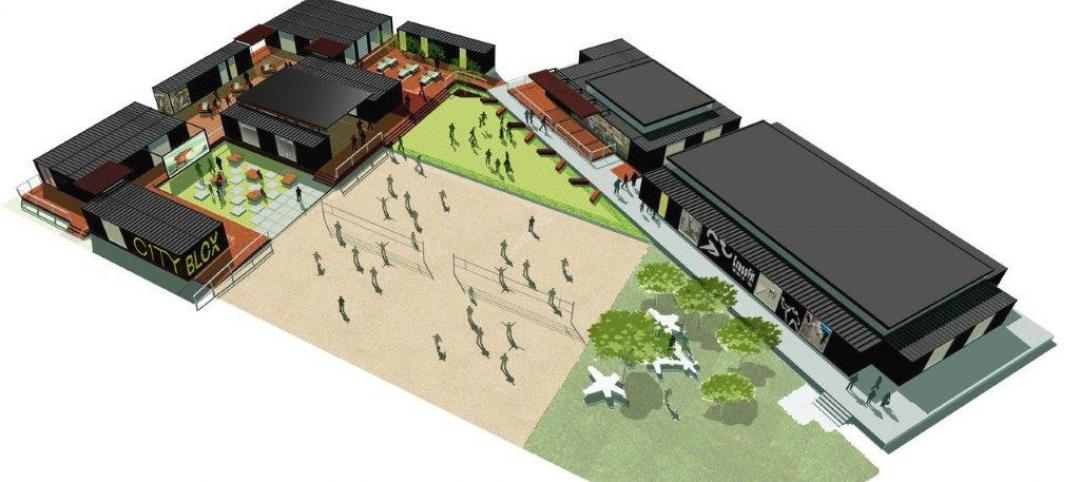Amsterdam-based hotelier citizenM has North America in its sites for major expansion that favors modular construction.
Having already opened two modular hotels in New York City, citizenM has two hotels under development in Los Angeles, including a 14-story, 183-ft, 216-key hotel at the intersection of Hollywood and Vine; and an 11-story, 315-room hotel at 4th and Spring Streets in L.A.’s historic Downtown Core.
CitizenM also has revealed plans to open two hotels in Seattle, and single hotels in Boston, Miami, San Francisco, and Washington DC.
See Also: DeSimone Consulting Engineers designs the tallest modular hotel in the United States
In Seattle, construction started in March on the 93,245-sf South Lake Union citizenM hotel, which Mortenson Construction is building with 228 steel-framed modular units that were prefabricated in Poland by Polcom, shipped 9,473 miles via the Panama Canal to the Port of Everett, Wash, and transported by truck to the jobsite.
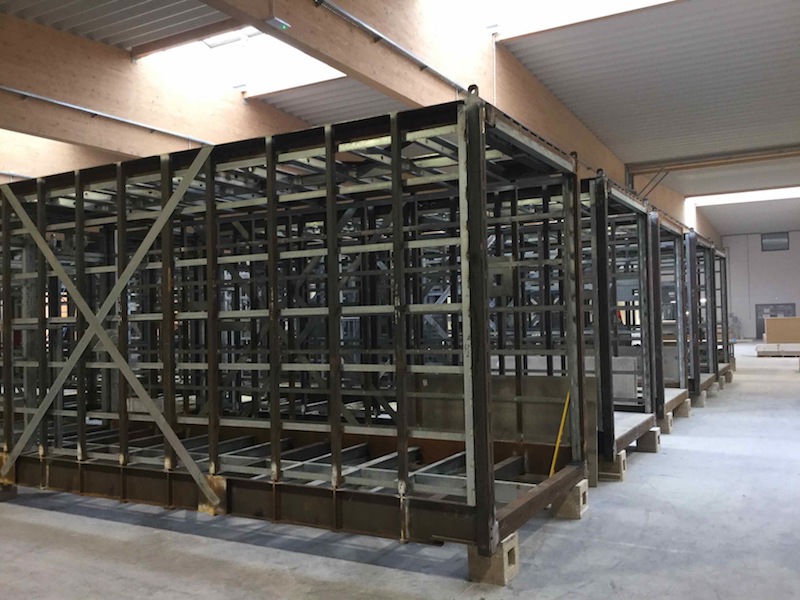 Steel-framed modules are shipped virtually complete, with beds, TVs, millwork, and bath fixtures installed. Image: Courtesy Mortenson
Steel-framed modules are shipped virtually complete, with beds, TVs, millwork, and bath fixtures installed. Image: Courtesy Mortenson
Polcom has supplied steel modules for numerous citizenM hotels in Europe, but wood framing or mass timber have been the more-common materials for modular projects in the U.S., even as height restrictions in most markets still limit the use of wood. “There is a large difference between wood frame modular construction and high-rise steel construction, which is what we are doing here in Seattle and in Los Angeles,” says Phillip Greany, Associate DBIA, LEED AP BD+C, general manager of Mortenson’s Seattle Operating Group in Kirkland, Wash.
The modules Polcom produces come virtually complete, with beds, wall-mounted TV screens, bathroom fixtures, doors and windows already installed. (The modules are wrapped in plastic and pressured to keep the components in place during transport.)
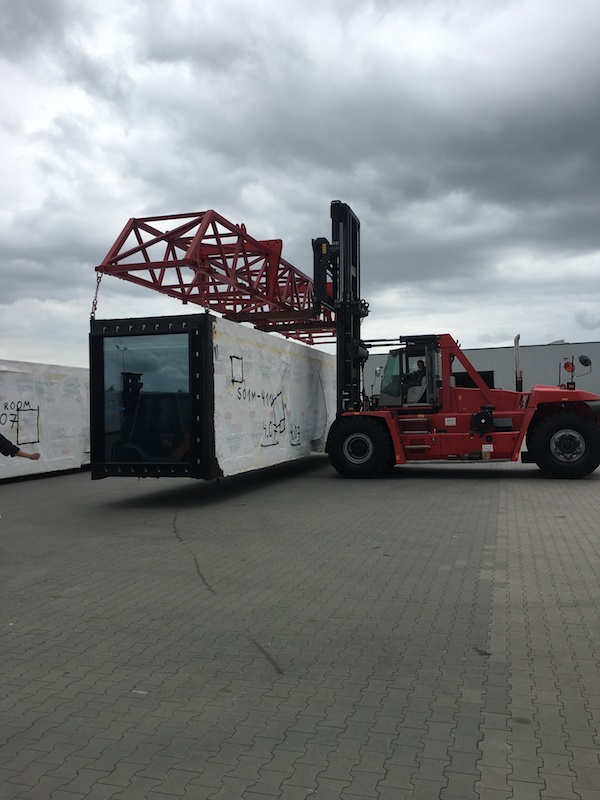
However, citizenM has brought on Gensler to design several of the hotels it is opening in the U.S., to ensure those buildings meet local Building, MEP, and Energy codes. (South Lake Union will be the first modular hotel in Seattle.) “There is also a major ground floor and basement that are conventionally built,” explains Greany, and will include an expansive lobby, a 24/7 canteenM food and beverage amenity, and four meeting areas.
He estimates that construction will take 13 months to complete, and that the 264-key Seattle hotel will be up and running by June 2019.
Related Stories
Sponsored | | Jan 26, 2015
Modular space showcase: Powerful space solutions for Ontario’s energy future
Having access to the right workspace is important, regardless of location. A comfortable, efficient and attractive workspace can make all the difference for workers. For Hydro One Networks, an electricity transmission and distribution company based in Ontario, establishing well-equipped field offices in various remote locations was essential to success.
Modular Building | Jan 21, 2015
Chinese company 3D prints six-story multifamily building
The building components were prefabricated piece by piece using a printer that is 7 meters tall, 10 meters wide, and 40 meters long.
| Jan 2, 2015
Construction put in place enjoyed healthy gains in 2014
Construction consultant FMI foresees—with some caveats—continuing growth in the office, lodging, and manufacturing sectors. But funding uncertainties raise red flags in education and healthcare.
| Dec 29, 2014
New mobile unit takes the worry out of equipment sterilization during healthcare construction [BD+C's 2014 Great Solutions Report]
Infection control, a constant worry for hospital administrators and clinical staffs, is heightened when the hospital is undergoing a major construction project. Mobile Sterilization Solutions, a mobile sterile-processing department, is designed to simplify the task. The technology was named a 2014 Great Solution by the editors of Building Design+Construction.
| Dec 28, 2014
Robots, drones, and printed buildings: The promise of automated construction
Building Teams across the globe are employing advanced robotics to simplify what is inherently a complex, messy process—construction.
| Dec 28, 2014
AIA course: Enhancing interior comfort while improving overall building efficacy
Providing more comfortable conditions to building occupants has become a top priority in today’s interior designs. This course is worth 1.0 AIA LU/HSW.
| Dec 28, 2014
Workplace design trends: Make way for the Millennials
Driven by changing work styles, mobile technology, and the growing presence of Millennials, today’s workplaces are changing, mostly for the better. We examine the top office design trends.
Sponsored | | Dec 22, 2014
Harnessing the power of wind energy
Wind is generating a great deal of attention these days. I’m talking about wind power that occurs naturally in the atmosphere that is then converted into mechanical energy and then into electricity. SPONSORED CONTENT
Sponsored | | Dec 16, 2014
Deconstructing 2014
With 2014 coming to a close, we decided to take a look back at the year in construction. SPONSORED CONTENT
| Dec 2, 2014
Nashville planning retail district made from 21 shipping containers
OneC1TY, a healthcare- and technology-focused community under construction on 18.7 acres near Nashville, Tenn., will include a mini retail district made from 21 shipping containers, the first time in this market containers have been repurposed for such use.


